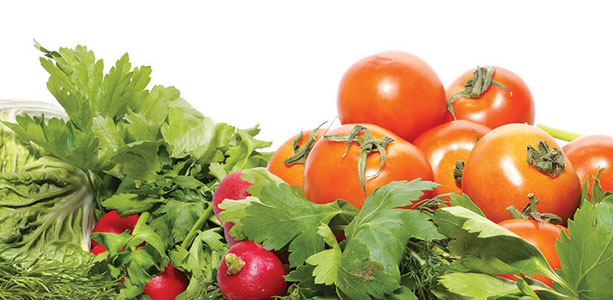Rates of allergies seem to be increasing like wildfire throughout industrial nations. In fact, according to the World Health Organization, sensitization rates to one or more common allergens in children have increased by 40–50 percent worldwide.1 And 30–35 percent of the world’s population are expected to experience allergies at some stage in their lifetime.2 With the rise in industrial pollutants and the fall in healthy eating patterns, it shouldn’t come as a surprise that the number of allergy sufferers is going to continue to grow. So what is an allergy anyway? An allergy is defined as the immune system’s answer to any substance that the body considers as foreign (allergen). In response to the so-called foreign substance, the immune system generates a series of reactions that eventually lead to the production and release of an immune antibody called IgE and a substance called histamine. IgE along with histamine, are called into action in order to neutralize the foreign substance. Inflammation in various parts of the body is the usual end reaction to allergens. The problem is, excess inflammation is also a leading cause of disease these days.3
The body’s ability to detect foreign substances varies from person to person. Thus, some people react to certain substances while others do not. What may be recognized by one person’s body as foreign is not recognized as such by another person’s body.
While allergies are part of the normal function of the immune system, it does not follow that they cannot be managed or minimized. Certain nutrients, when taken in the right amounts, can go a long way in minimizing—if not totally eliminating—the unpleasant symptoms of allergies. Following are my top nutrients for beating allergies:
1. Vitamin C
Vitamin C is an antioxidant that helps reduce allergy symptoms like inflammation. It has been shown in past medical studies that a high intake of vitamin C prevents or at least minimizes the release of histamine, and consequently decreases the unpleasant sensations endured by allergy sufferers.4
Vitamin C can be readily added into the diet, because of the many fruits and vegetables that contain it. Citrus fruits like oranges and lemons contain very high amounts of vitamin C in its most natural form. Excellent non-citrus sources include papaya, pineapple, and strawberries. Aside from fruits, vitamin C can also be obtained from over-the-counter supplement tablets or capsules and one of the best forms to consume it in is camu camu berry.
2. Selenium
Selenium is a trace element that is a component of some proteins with powerful antioxidant properties. These proteins help reduce allergy symptoms by minimizing tissue damage and inflammation.5 The U.S. National Institute of Health recommends that all adults take 100 mcg of selenium daily. Fruits, vegetables, dairy products, and whole grains are rich sources of selenium. Meat sources include poultry (turkey and chicken), lean pork, beef, and eggs.
3. Omega-3 fats
Also known as healthy fats, omega-3 fatty acids have long been proven by science to have anti-inflammatory properties. As such, they help relieve some allergy symptoms. On the other hand, the structurally-related omega-6 fatty acids have the opposite effect: they stimulate the production of inflammatory substances. In fact, one study appearing in the British Journal of Nutrition, indicated that pregnant women who had a lower intake of omega-6 and a higher intake of omega-3’s, gave birth to children with lower risks of certain allergies.6 Allergy sufferers are therefore advised to decrease intake of foods that are rich in omega-6 fatty acids (i.e. poultry, eggs, nuts, cereals, durum wheat, whole-grain breads and most vegetable oils). Dietary sources of omega-3 fatty acids include cold-water fish, soybeans, flaxseeds, spinach, parsley, walnut oil, soybean oil, and flaxseed oil.
4. Vitamin E
Vitamin E, when taken in proper amounts, can help reduce allergies. A study investigating the connection between vitamin E and allergies suggested that sufficient vitamin E intake decreased the production of IgE, the antibody responsible for allergic reactions, anywhere from 34–62 percent.7,8
Dietary sources of vitamin E are sunflower seeds, almonds, cooked spinach, safflower oil, and beet greens. And even though the RDA for vitamin E is fifteen milligrams (which is equivalent to 22 IUs or International Units), studies indicate a lot more than the RDA is needed to ensure optimal health. Also, I highly advise the most natural forms of vitamin E, as mixed tocopherols, as opposed to only one isolate form like alpha tocopherol.
5. Quercetin
Quercetin belongs to a class of organic molecules called bioflavonoids. Scientific research has proven it to have anti-inflammatory, antioxidant, and anti-histamine properties. Quercetin has been shown to exert properties that prevent the production of substances involved in allergic reactions.9 Sources of quercetin include apples, black tea, red wine, onions, beans, grapefruit, berries, peppers and green leafy vegetables. There are also commercial quercetin supplements that are sold online and in health food stores, should the allergic person choose to take it in tablet or capsule form.
6. Probiotics
Probiotics is the collective term for the live microorganisms (bacteria and yeast) that are essential for optimal health. These microorganisms are present in the body, as well as in various supplements, drinks, and food (i.e. yogurt made from grassfed cows). Their main role is to prevent the growth of “bad” bacteria, and in doing so, also prevent diseases brought about by these “bad” bacteria. There are two very common probiotic bacteria—Lactobacillus acidophilus and Bifidobacterium bifidum. One of the most research proven shelf-stable forms of the latter is found in my Ultimate Probiotic,10,11 product.
While probiotics are usually involved in digestive health, studies have suggested that they can also help prevent or minimize allergies12, since digestive health is very closely connected to overall body health.
Foods with probiotics include miso, fermented milk, kefir, sourdough bread, tempeh, and fermented vegetables like sauerkraut.
7. Rosmarinic acid
Rosmarinic acid is a plant substance that is found in large amounts in herbs like rosemary, marjoram, sage, and oregano. Studies have shown that it has anti-inflammatory properties that are more potent than those of vitamin E. In 2004, Japanese researchers published a paper that demonstrated the ability of rosmarinic acid as a therapeutic substance for those who suffer from asthma.13 Rosmarinic acid seems to prevent allergic reactions by blocking the activation of biochemicals produced by the immune system in response to a foreign substance.14
References
- Pawankar R, et al. World Health Organization. White Book on Allergy 2011–2012 Executive Summary.
- Why is Allergy Increasing? Allergy UK.
- Li L. Biologist studies possible link between chronic low-grade inflammation, major diseases. Virginia Polytechnic Institute and State University. Jun 12, 2011.
- Johnston CS, Solomon RE, Corte C. Vitamin C depletion is associated with alterations in blood histamine and plasma free carnitine in adults. J Am Coll Nutr. 1996 Dec;15(6):586–91.
- Kamer B, et al. Role of selenium and zinc in the pathogenesis of food allergy in infants and young children. Arch Med Sci. See comment in PubMed Commons below 2012 Dec 20;8(6):1083–8. doi: 10.5114/aoms.2012.32420. Epub 2012 Dec 19.
- Nwaru BI, et al. Maternal intake of fatty acids during pregnancy and allergies in offspring. Br J Nutr. 2012 Aug;108(4):720–32. doi: 10.1017/S0007114511005940. Epub 2011 Nov 9.
- Yamada K, Tachibana H. Recent topics in antioxidative factors. Biofactors. 2000;13(1-4):167–72.
- Tsoureli-Nikita, et al. Evaluation of dietary intake of vitamin E in the treatment of atopic dermatitis: a study of the clinical course and evaluation of the immunoglobulin E serum levels. Int J Dermatol. 2002 Mar;41(3):146–50.
- Salvatore Chirumbolo. Dietary Assumption of Plant Polyphenols and Prevention of Allergy. Current Pharmaceutical Design, 2014, 20, 000-000 1.
- Ballongue J, et al. Effects of Bifidobacterium fermented milks on human intestinal Lait 73, 249–256 (1993).
- Tomoda T, et al. Effect of yogurt and yogurt supplemented with Bifidobacterium and/or lactulose in healthy persons : A comparative study. Bifidobacteria Microfloa 10, 123–30 (1991).
- Prakash S, et al. Probiotics for the prevention and treatment of allergies, with an emphasis on mode of delivery and mechanism of action. Curr Pharm Des. 2014;20(6):1025–37.
- Osakabe N, et al. Anti-inflammatory and anti-allergic effect of rosmarinic acid (RA); inhibition of seasonal allergic rhino-conjunctivitis (SAR) and its mechanism. Biofactors. 2004;21(1-4):127–31.
- Huang SS, Zheng RL. Rosmarinic acid inhibits angiogenesis and its mechanism of action in vitro. Cancer Letters. 2006 Aug 8;239(2):271–80. Epub 2005 Oct 18.









